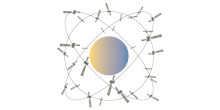EUSPA 20th Anniversary
20 steps to EUSPA
EUSPA is celebrating its 20th anniversary! Since its inception in 2004 and rebranding in 2021, EUSPA has grown significantly. EUSPA is a user-oriented operational Agency that is implementing the EU Space Programme. It bridges space technology and user needs translating the EU’s investment into valuable, reliable services for European citizens and companies. Let's look at some highlights of EUSPA's journey!
Creation of the GSA, the European GNSS Supervisory Authority.
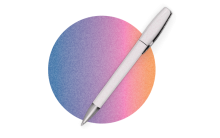
The EUSPA Headquarters are opened in Prague, Czech Republic.
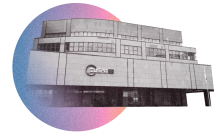
The Galileo Security Monitoring Centre (GSMC) is opened in St Germain en Laye, France. The GNSS Service Centre (GSC) is inaugurated in Madrid, Spain.

The Agency takes over the responsibility of EGNOS exploitation and services development.
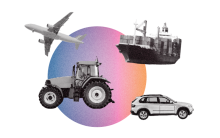
Galileo Initial Services are declared with ongoing support for Galileo users through the GNSS Service Centre (GSC) and a 24/7 security monitoring thanks to the GSMC. EUSPA becomes the Galileo Service Provider.
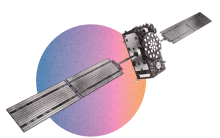
EUSPA organises the first User Consultation Platform.

EUSPA oversees the Galileo satellite Launch and Early Orbit phase for the 1st time.
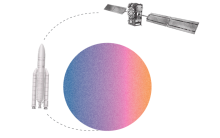
EUSPA launches the procurement of the GOVSATCOM secure ground segment, the GOVSATCOM Hub.

The GSA becomes the European Union Agency for the Space Programme (Regulation 2021/696; 28 April).

The Security Accreditation Board of the EU Space Programme (SAB) becomes responsible for the security accreditation of all the EU Space Programme components.

Signature of the Financial Framework Partnership Agreement (FFPA) between European Commission (EC), EUSPA and European Space Agency (ESA).

EUSPA, under EC delegation, coordinates the governmental users’ community and collects user needs for GOVSATCOM.

EUSPA publishes the first EO and GNSS Market Report.

EUSPA has created a network of 1000 start-ups and 28 investors and organises the first CASSINI Entrepreneurship Days.
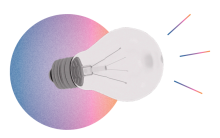
EUSPA supports the EC on the development of IRIS2, the new EU Secure Satellite Constellation and the SAB is responsible for its security accreditation.

EUSPA takes over the EU Space Surveillance and Tracking (SST) Front Desk, which is relocated to the GSMC, Spain.
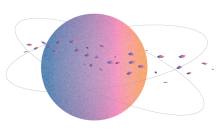
Around 1000 EGNOS-based procedures implemented in 500 airports and helipads using EGNOS Safety of Life procedure.

Within a span of 20 years, EUSPA saw a 300% staff increase, with more than 40000 applications reaching EUSPA.

EUSPA budget doubled to reach €70M/year and €9.5B is delegated over 2021-2027. In average, 300 contract actions are managed each year.

EUSPA becomes the Contracting Authority of the Galileo contracts in execution and the System Prime of the System in Operations.

#EUSpace: 20 achievements
In the last 20 years, EU Space technologies have evolved. EGNOS, Galileo and Copernicus services were the first to be implemented. Now, with GOVSATCOM, SSA, and soon IRIS2, the EU Space Programme continues to adapt to user needs and societal changes. Below are 20 of EU Space’s significant achievements, demonstrating impact and capabilities for business and citizens. It's hard to pick just 20!
EGNOS Open Service declared.

EGNOS Safety-of-Life Service (SoL) declared and certified for use in Civil aviation.
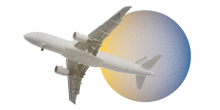
Launch of the 1st Galileo satellite from the Europe’s Spaceport in Kourou, French Guyana.
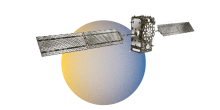
The EGNOS Data Access Service (EDAS) declared.

First Galileo-enabled smartphone hits the market.
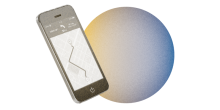
First EGNOS LPV 200 approach implemented allowing lateral and angular vertical guidance until an aircraft is 200 feet above the runway.
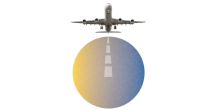
Galileo Initial services - Open Service (OS), Public Regulated Service (PRS) and the Search and Rescue Service (SAR) - declared.
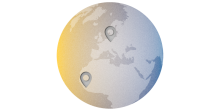
First eCall car equipped with EGNOS and Galileo goes on the market.

First Galileo SAR enabled beacons for maritime go on the market.

About 50% of GNSS receivers for agriculture are Galileo-capable, and up to 85% of new European tractors using GNSS have EGNOS. The first Galileo-enabled SAR beacon for aviation and Renault Zoe, an autonomous vehicle, have been tested.

The availability of EGNOS over Europe doubled for the Safety of Life Service.

The SAR/Galileo Return Link Service (RLS) is declared operational.
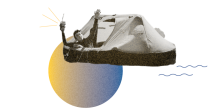
The Galileo Green Lane application is developed to ease the free movement of freight, reduce waiting times at EU borders and prioritise the transport of essential goods during the COVID-19 pandemic.

The Galileo Initial High Accuracy Service (HAS) is declared.
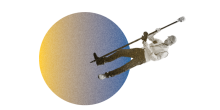
More than 3 billion Galileo-enabled smartphones are in use worldwide.

The Galileo Emergency Warning Satellite Service (EWSS), the Galileo OSNMA test signal and initial operation capability are all successfully tested.

EGNOS Safety of Life Assisted Service for Maritime Users (ESMAS) is launched.
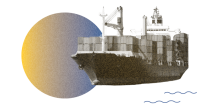
Creation of EUSpace ISAC (EU Space Information Sharing Centre), managed by EUSPA and the European Commission. The EU Space ISAC contributes to the security and resilience of EU-owned space systems and their supply chain.
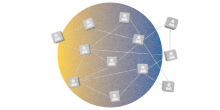
New Galileo PRS signal in space broadcast for PRS Initial Operational Capability.

32 Galileo satellites have been launched.
